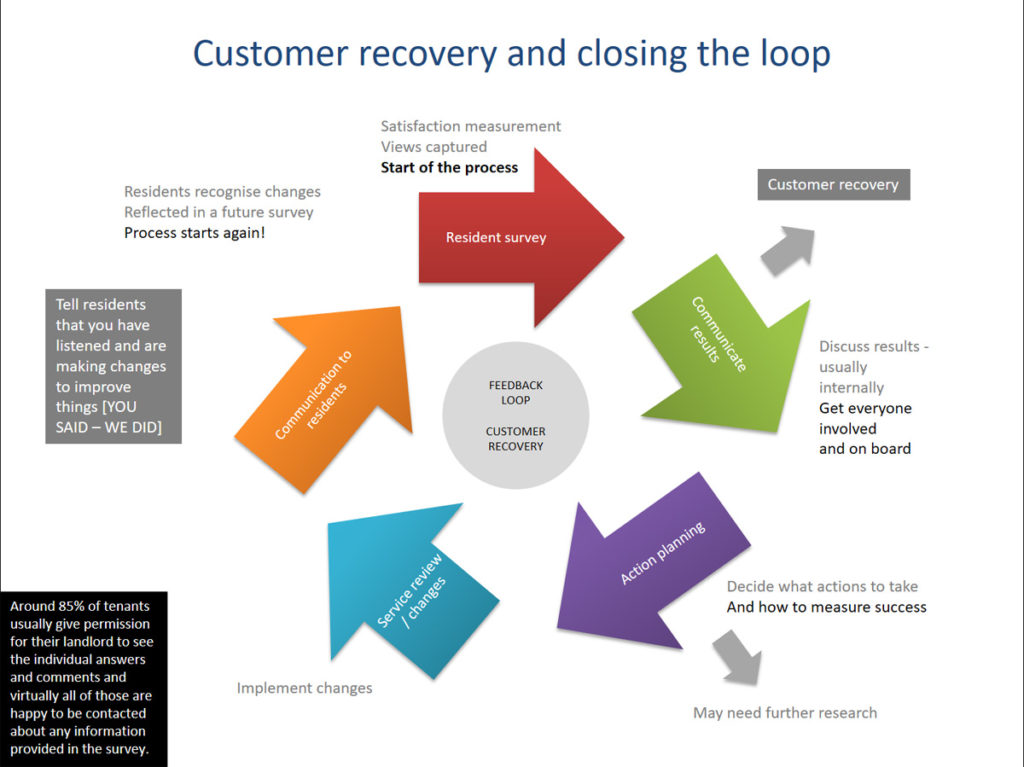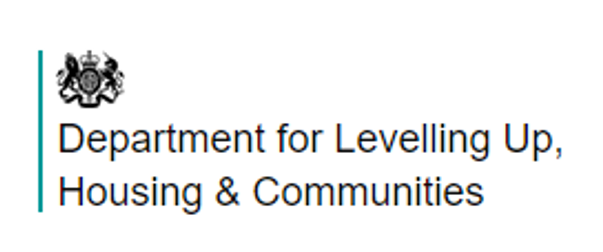(Vital housing research questions, and what to do with the answers part 3)
Recent events tell us that you cannot put enough stress on finding out what your residents think, both formally and informally.
Resident surveys underpin your understanding of what’s going on with your services and your tenants, and it’s important to make them work as well as possible – and to pay attention to what they say. The trick is to remember that the survey itself is only part of a larger process – and the best way to think about that is as a constant feedback loop.
Do this well, and your organisation will find itself in a constant cycle, lasting two or three years, giving plenty of time to plan, do and review. There shouldn’t be any nasty surprises or a rush to meet unexpected targets or demands, and your residents and staff will be able to see and participate in the improvement of services. To put it another way: there’s a process and it works well for everyone.
We call this closing the feedback loop: let’s review how it works.
Carrying out a survey is usually the start of a new process: your organisation will be thinking through what information it wants, and what method it prefers to get it (my blogs from earlier this year have covered some of the pros and cons of telephone and online surveys).
We’ll have plenty of useful data to work on with you, and since most surveys now are not anonymous, you will be able to follow up on comments made by most residents if you need further clarification or if there’s evidence of a serious issue to check out. So hopefully, as part of the planning process, you will have allocated extra time for follow-up work and customer recovery.
Once we’ve got the results back, we’ll be writing a report and then talking about the findings and their implications to members of your staff at all levels, plus the Board. It can be particularly important to get the Board properly involved here: it’s important for them to understand that surveys aren’t simply a rubber-stamping exercise, but part of the process which keeps your organisation running well and residents satisfied.
This is the time for action planning events, if your results have shown a need for services to change or improve, and we are happy to help run events to begin this process.
Once you’re ready, it’s time to tell residents what’s happening – not just the results of the survey, but how you’re planning to respond and why. Will some processes change? Is there a particular area you need to improve? Will you will be seeking their input in any consultation regarding any potential changes? It’s really important here to keep them informed, which means telling them about plans, actions – and when things are complete.
This whole process can easily take a year or two if service reviews are involved, and it’s almost time to run your next survey (unless you’re arranged for a continuous review of residents). Now you need to know not just what they think about issues in general, but whether they’ve noticed a difference as a result of your actions.
Sometimes you need to be blunt and very specific in these questions. So, for example you might ask: “In 2016 we introduced a customer contact centre to handle all telephone enquiries. If you have been in touch with us since July 2016, has the service improved?”
But, it’s also worth remembering that it can take residents a while to notice changes: it’s no good being short-termist. You need to take a medium to long-term approach. Communication is key – but I’ll discuss that in more detail in my final blog of the series next week.
This is what the whole process looks like:
There can be a lot of work and planning to do to keep this process on track, and it can be useful for even the biggest associations to get external help and advice.
As always, we’re happy to discuss your needs and get involved in your surveying, tailoring our support to your needs. With decades of experience in the sector and a large database, we can be as flexible as you need and help you with any aspect of the feedback loop process.
Interested? Please don’t hesitate to email me and we can take it from there.
Next week, I’ll be looking at the importance of good communications as part of the feedback loop – and showing how even the smallest organisation can do this well.
Did you miss the last two blogs in the series, on open-ended questions and the perception question? Find them here.







Comments are closed.